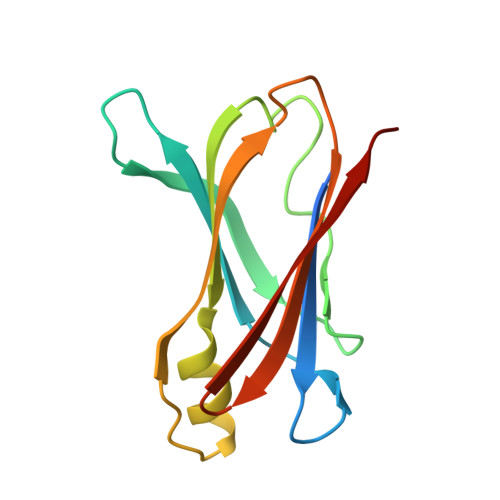Toward optimization of the linker substructure common to transthyretin amyloidogenesis inhibitors using biochemical and structural studies.
Johnson, S.M., Connelly, S., Wilson, I.A., Kelly, J.W.(2008) J Med Chem 51: 6348-6358
- PubMed: 18811132
- DOI: https://doi.org/10.1021/jm800435s
- Primary Citation of Related Structures:
3CN0, 3CN1, 3CN2, 3CN3, 3CN4 - PubMed Abstract:
To develop potent and highly selective transthyretin (TTR) amyloidogenesis inhibitors, it is useful to systematically optimize the three substructural elements that compose a typical TTR kinetic stabilizer: the two aryl rings and the linker joining them. Herein, we evaluated 40 bisaryl molecules based on 10 unique linker substructures to determine how these linkages influence inhibitor potency and selectivity. These linkers connect one unsubstituted aromatic ring to either a 3,5-X 2 or a 3,5-X 2-4-OH phenyl substructure (X = Br or CH 3). Coconsideration of amyloid inhibition and ex vivo plasma TTR binding selectivity data reveal that direct connection of the two aryls or linkage through nonpolar E-olefin or -CH 2CH 2- substructures generates the most potent and selective TTR amyloidogenesis inhibitors exhibiting minimal undesirable binding to the thyroid hormone nuclear receptor or the COX-1 enzyme. Five high-resolution TTR.inhibitor crystal structures (1.4-1.8 A) provide insight into why such linkers afford inhibitors with greater potency and selectivity.
Organizational Affiliation:
Department of Chemistry, The Skaggs Institute for Chemical Biology, The Scripps Research Institute, BCC 265, 10550 North Torrey Pines Road, La Jolla, California 92037, USA.















